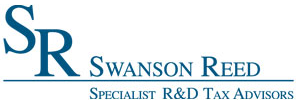Kansas Updates State R&D Tax Credit
Kansas has long offered a state R&D tax credit for C corporations. Now, recent changes will see this credit opened up to individuals, partnerships, S corporations, limited liability companies, and other pass-through entities.
The original credit came into effect for all taxable years beginning after Dec. 31 1987. This new, expansive credit will be available to all income taxpayers beginning in tax year 2023.
Summary of Recent Changes
The first big change includes opening the credit to all income taxpayers, rather than simply C corporations.
The second change is the inclusion of an application prior to claiming the credit using form K-204. This form must be submitted along with a copy of the federal Form 6765 and any substantiating data.
In the third change, for tax year 2023 and on, new R&D tax credits can be transferred by a taxpayer without any tax liability to any person. The credit must be transferred in full and only one time. The recipient may then carry the credit forward as needed.
The credit will increase from 6.5% to 10%.
The Credit
The Kansas state credit follows in line with the federal regulations in the Internal Revenue Code of 1986. This means qualified research expenditures are those expenses for activities intended to discover information that eliminates technical uncertainty when developing or improving a product, process, technique, formula, or invention.
Of course, there are some limitations. The research must be conducted in the state and the expenses made in the state of Kansas. In addition, qualified research expenditures must fall within the following categories:
- Staff time spent designing or conducting technical experimentation or development
- Domestic contractors in the state performing development work on behalf of the company
- Consumable materials and supplies (e.g. for prototypes)
- Cloud-based software licensing fees or technical hosting costs associated with development
The credit is 6.5% of the difference between the actual qualified R&D expenses for the year and the average of the actual expenditures made in a prior year baseline period. For all taxable years commencing after December 21, 2022, the credit will be 10% of the difference.
The Preapproval Application Form K-204
The new K-204 (Research and Development Credit Application) is designed as a means to obtain approval and certification. The taxpayer must specify any shareholders, partners, or members whom the credit will flow through to. In addition, the form requests information for each type of expenditure and the computation for the credit.
Once submitted, the state will review the application and, if approved, provide a tax credit certificate number, which can be entered on the new K-53.
Are you developing new technology for an existing application? Did you know your development work could be eligible for the R&D Tax Credit and you can receive up to 14% back on your expenses? Even if your development isn’t successful your work may still qualify for R&D credits (i.e. you don’t need to have a patent to qualify). To find out more, please contact a Swanson Reed R&D Specialist today or check out our free online eligibility test.
Who We Are:
Swanson Reed is one of the U.S.’ largest Specialist R&D tax advisory firms. We manage all facets of the R&D tax credit program, from claim preparation and audit compliance to claim disputes.
Swanson Reed regularly hosts free webinars and provides free IRS CE and CPE credits for CPAs. For more information please visit us at www.swansonreed.com/webinars or contact your usual Swanson Reed representative.







